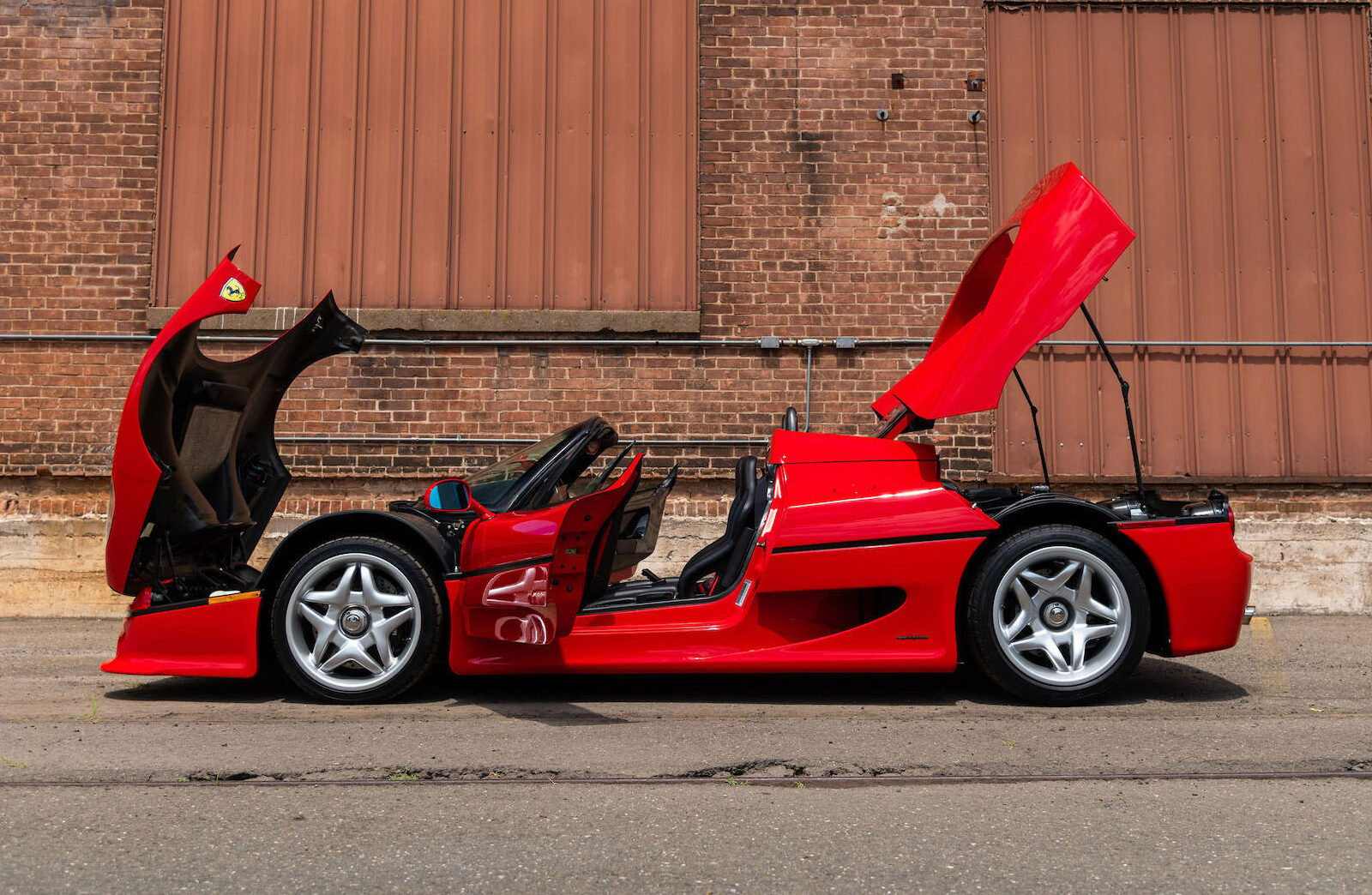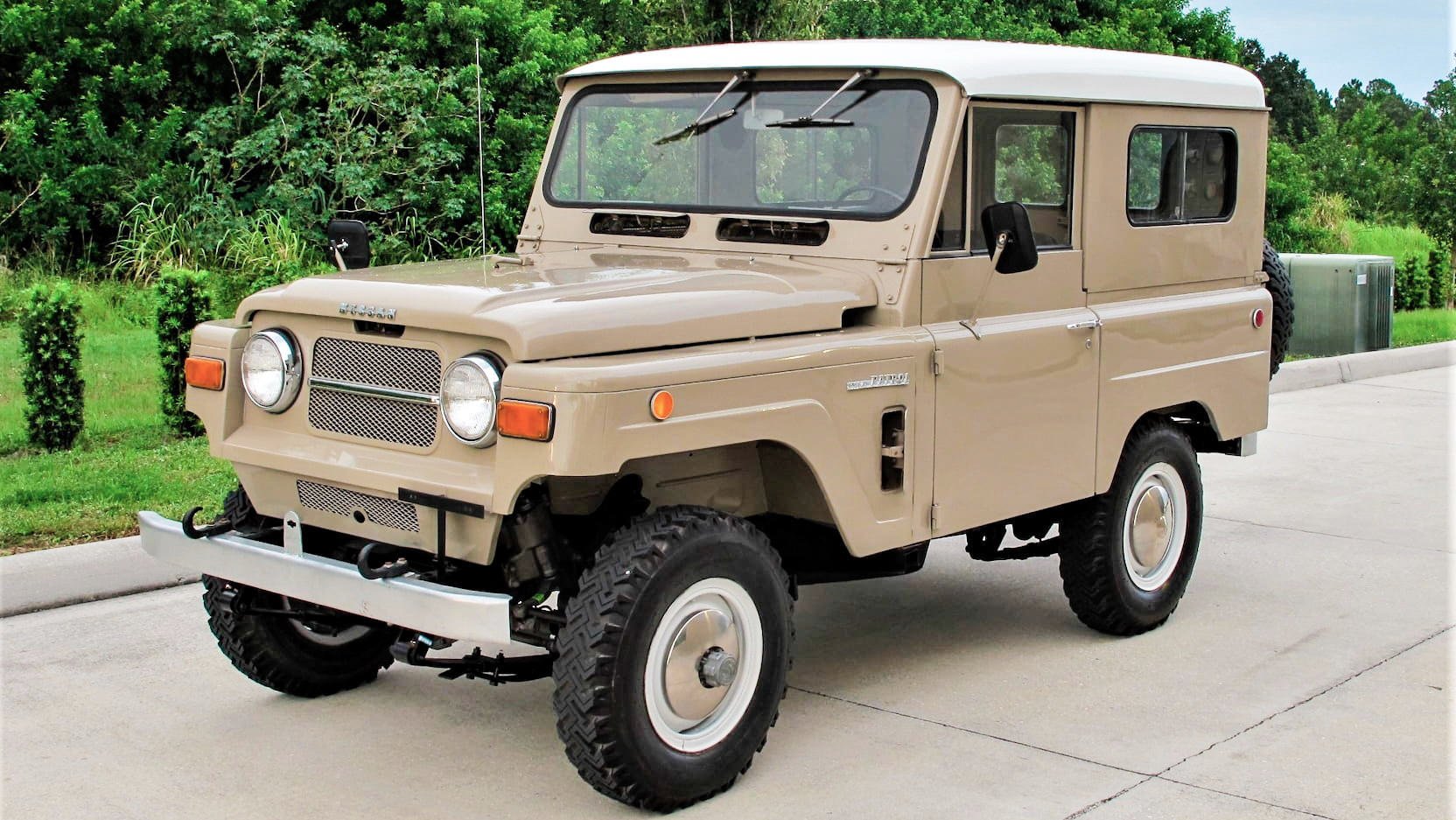









from Tumblr https://somar78.tumblr.com/post/658102058672635904






utwo:
Cabins on the mountain by Veliz Arquitecto & ta E. “Organic architecture developed on a single level and designed for short stays of climbers and tourists interested in direct contact with nature, construction system on a concrete platform and wooden structure that takes advantage of the visuals of the environment in its entirety, consists of a room with bathroom and kitchen and a large terrace outside”, tells
© Veliz Arquitecto
When the Ferrari F50 was introduced in 1995 it had big shoes to fill, it was destined to be the successor to the enduringly popular Ferrari F40, a vehicle that remains one of the most beloved supercars of all time.
Following in the naming convention of the F40, the F50 was released to celebrate 50 years since Ferrari was founded, and it was intended to showcase everything the company had learned both in Formula 1 and in its road car operations.
✱ The Ferrari was introduced in 1995 to celebrate 50 years since the company’s founding, the name is derived from “Ferrari 50.”
✱ The 65º V12 engine was directly derived from the engine used in the 1990 Ferrari 641 Formula 1 car, with significant modifications to make it suitable for road use.
✱ The Ferrari F50 was built with a full carbon fiber monocoque structure, F1 inspired wishbone and pushrod suspension front and back, and the engine was used as a stressed chassis member.
✱ Just 349 examples of the F50 were ever built, a number chosen because it was exactly one car fewer than the company believed they could sell.
When the Ferrari F50 was released in 1995 the anticipation was palpable, this was the car destined to succeed the wildly popular Ferrari F40, and unlike its forebear it was fitted with a naturally aspirated V12 that was directly derived from Ferrari’s 1990 F1 car engine.
Above Image: The F50 has no power steering or power brakes, no ABS, and it uses wind up windows. All to keep weight down and give the occupants a truly analogue experience.
In order to mark half a century of operations, Ferrari set out to do the impossible – build a road legal Formula 1 car with two seats. Now as much as that may sound like hyperbole, it’s remarkably close to reality.
Not only was the Ferrari F50 fitted with a Formula 1 derived V12 engine, it was also fitted with F1-style double wishbone and pushrod suspension front and back, the engine is a stressed chassis member as is the transaxle gearbox, the car uses a puncture resistant fuel bag rather than a traditional tank, and the car has no driver aids – power steering, power brakes, tractional control, or ABS were never offered.
“The first and last Formula 1 car with two seats.” – Former Ferrari President Luca di Montezemolo
So extreme was the F50 that Ferrari believed they would probably only be able to sell 350 of them worldwide, so they made exactly 349 in order to ensure the car would always be in demand. Just 55 examples would be offered for the United States, and today original USA-delivered cars tend to attract a premium.
Above Video: This short film hosted by former-F1 driver Tiff Needell offers an excellent introduction to the F50.
As with any Ferrari since the company’s inception, it’s the car’s engine that is the true hero. Even for a company like Ferrari who have been famous for building technically sophisticated engines since the mid-20th century, the F50 engine was something special.
The concept of taking a Formula 1 engine and putting it in a road car sounds foolhardy on the face of it. F1 engines of the era were designed to last 70 odd laps and not a lot further, they were designed to run on race fuel, and they only needed to push a vehicle that weighed a few hundred kilograms.
Ferrari engineers set about taking the 3.5 liter V12 used in the 1990 Ferrari 641 Formula 1 car and turning it into a 4.7 liter road-going supercar engine, and I’m willing to bet they regularly needed wine with their lunch during the engine development process.
What they ended up developing was an engine for the ages, a 65º naturally aspirated V12 with 5-valves per cylinder, double overhead cams per bank, forged Mahle pistons, forged titanium connecting rods, a forged steel crankshaft, and a total weight of just 198 kg (437 lb).
Above Image: The Formula 1-derived V12 has 5-valves per cylinder and it turns out over 500 hp. Enough to send the F50 to a top speed of just over 200 mph.
According to Ferrari the power output was 520 hp at 8,500 rpm with 347 lb ft of torque at 6,500 rpm. This gave the 3,080 lb (1,397 kg) F50 a 0 to 60 time of 3.8 seconds, a 1/4 mile time of 12.1 seconds at 123 mph, and a top speed of 202 mph.
The F50 you see here has full Ferrari Classiche certification (January 2013) and it won both the Platinum Award and “Best F50” at Cavallino XXIX.
This car was delivered new to Ferrari collector Stanley Cohen of Windsor, Connecticut who would own the car for 22 years, always using the same person to service it – Thomas Passalacqua.
A major engine service was completed in January 2017, later that year the car also received a new fuel bladder, tires, and brake lines, all in it cost nearly $51,000 USD.
The car is now due to roll across the auction block with RM Sotheby’s in mid-August, if you’d like to read more about it or register to bid you can click here to visit the listing.
Images: Andrew Link ©2021 Courtesy of RM Sotheby’s

The post The Ferrari F50: A Formula 1 Car With Two Seats appeared first on Silodrome.
This is a comprehensively restored 1969 Nissan Patrol 60, and a great example of what is now remembered as the first Patrol to be exported out of Japan and into various world markets in including the United States, Canada, Australia, South Africa, and India.
The Nissan Patrol has always somewhat lived in the shadow of more famous four-wheel drives, like the original Jeep, the Land Rover, and the Land Cruiser, however the Patrol has proven itself to be just as capable as any of its period rivals.
✱ The first production Nissan Patrols rolled off the assembly line in 1951, the same year the Toyota Land Cruiser entered production.
✱ Much like the first Land Cruiser, the first Patrol was largely based on the Willys Jeep. The Jeep had proven its mettle during WWII and the Japanese recognized the importance of having a similar vehicle.
✱ The second generation of the Nissan Patrol arrived in 1959 with considerably updated styling and a more comfortable, slightly less utilitarian interior than its predecessor.
✱ The Nissan Patrol 60 series would be sold from 1960 until 1980 when it was replaced with the 160 series Patrol. However the 60 series would stay in production in India as the “Jonga” until 1999.
The second generation Nissan Patrol, known as the 60 series, was developed in the late 1950s to solve the same problem that fellow 4×4 makers Land Rover, Willys, and Toyota were also working on – making their vehicles a little easier to live with on a daily basis.
Above Image: The spartan interior of the second generation Patrol was still a marked upgrade over the interior of the even more basic first generation model.
Whereas the first generation Nissan Patrol was closely based on the American Willys Jeep the 60 series would be its own unique design, with a fully closed cab, and basic amenities that made it a lot easier for owners to live with as a daily driver.
The Nissan Patrol used much the same structural design as its four-wheel drive contemporaries, including body-on-chassis design, a simple stamped steel body (or aluminum in the case of the Land Rover), with a front mounted engine sending power to either the rear wheels or all four wheels depending on the driver’s preference.
The 60 series Patrol was powered by the famously tough 4.0 liter straight-six petrol Nissan P engine, with pushrod actuated overhead valves, and 123 to 143 hp depending on model year.
Power was sent back to either a 3 or 4-speed manual transmission depending on model year, and a 2-speed transfer case giving the Patrol high and low-range, as well as driver selectable two or four-wheel drive.
Nissan offered the Patrol 60 in three different wheelbase lengths – short wheelbase (60), long wheelbase (G60), and super long wheelbase (H60).
The enduring nature of the Patrol’s design was perhaps best captured by the Indian armed forces, who entered into an agreement with Nissan to build their own version under license in India.
This Indian Patrol would be named the Jonga, short for Jabalpur Ordinance aNd Guncarriage Assembly. Production would stretch from 1965 all the way to 1999, and the vehicles are still a common sight on the roads of India with many former military vehicles now in private hands.
Above Image: The 60 series Nissan Patrol was powered by the reliable 4.0 liter straight-six petrol Nissan P engine.
The Nissan Patrol is now on its sixth generation, the popularity and positive reputation enjoyed by the model was largely established during the 20 year production run of the second generation model, so it’s not surprising that their values have been climbing significantly in recent years.
The Patrol you see here is a 1969 model, that was an important year for the model line as it was the last year that the model would ever be offered for sale in the USA.
This is the single nicest looking second generation Patrol we’ve seen in some time, largely due to the fact that it was comprehensively restored back to the condition it would have been in when it first rolled out of the factory.
It’s still fitted with its original matching-numbers engine, it’s finished in tan with white steel wheels and chrome hub caps, and it has a white roof.
If you’d like to read more about this Patrol or register to bid you can click here to visit the listing on Mecum. It’s due to roll across the auction block in late July.
Images courtesy of Mecum

The post For Sale: A Restored 1969 Nissan Patrol 60 appeared first on Silodrome.